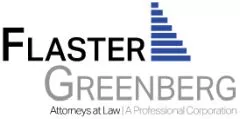On May 31 the Internal Revenue Service issued its second round of guidance for those entities wishing to obtain tax credits from clean energy projects as part of the $10B program contained within the Inflation Reduction Act of 2022 ("IRA"). Later in June it issued supplemental guidance relating to the "direct payment" option that certain public facilities, such as airports, may wish to use.
Of immediate concern to all who want to participate in the tax credit program, which is included under Section 48C of the Internal Revenue Code, is the time limit for submitting a "Concept Paper." This needs to be done between June 30 and July 31. The purpose of this window is to allow the Treasury Department to weed out projects which are unlikely to receive final acceptance.
The Section 48C program is an extension of a tax credit initially enacted in 2009. That tax credit now has been expanded to provide a transferable, or sellable, tax credit covering up to 30% of the total costs for projects. That total cost includes clean energy manufacturing and recycling, industrial decarbonization, and critical materials processing, refining and recycling.
As is often the case with these types of public sector applications, there is a page limit for the submission (4 pages), yet the amount of material required to be submitted is extensive. The challenge will be to convey the information needed within such limited space. The Energy Department has stated that there will be four criteria which will be applied in its analysis to determine if the projects meet the IRA's overall goals. analyzed for projects that meet the IRA's overall goals. Those criteria are:
- Commercial Viability;
- Impacts on greenhouse gas emissions;
- Strengthening US supply chain and domestic manufacturing to encourage a net-zero economy; and
- Community and workforce engagement.
All persons submitting proposals proposers delete should review the May 31 Guidance to see how the Energy Department will be defining concepts such as supply chains and domestic manufacturing, as well as workforce and community engagement.
Remember, the tax credits enacted as part of the IRA are mostly a series of "add ons" that can boost a base 6% tax credit up to 30% of total project costs. Understanding these rules is vital for financial success of the proposed project, whether it is to be publicly or privately constructed or owned.
The content of this article is intended to provide a general guide to the subject matter. Specialist advice should be sought about your specific circumstances.


